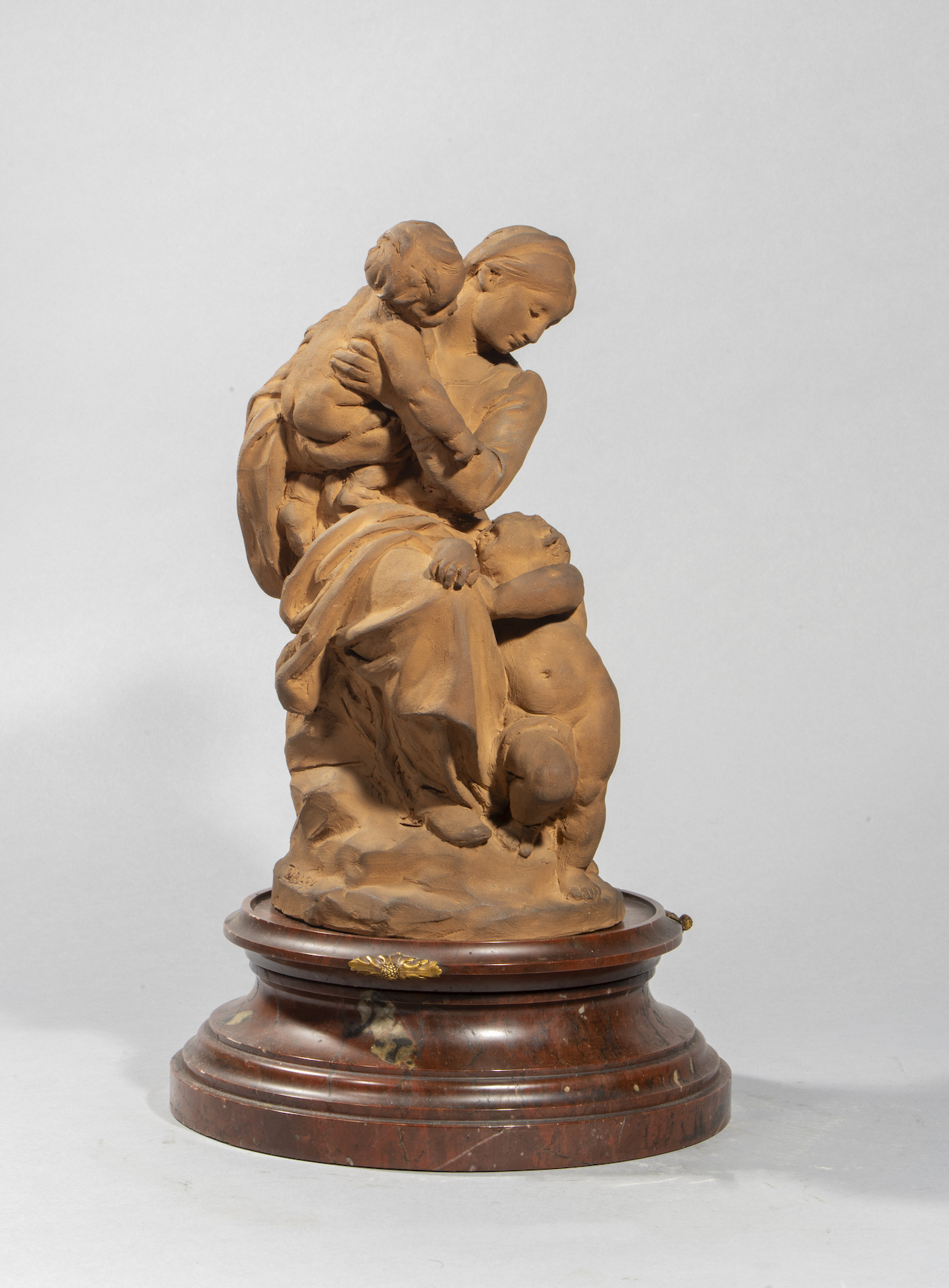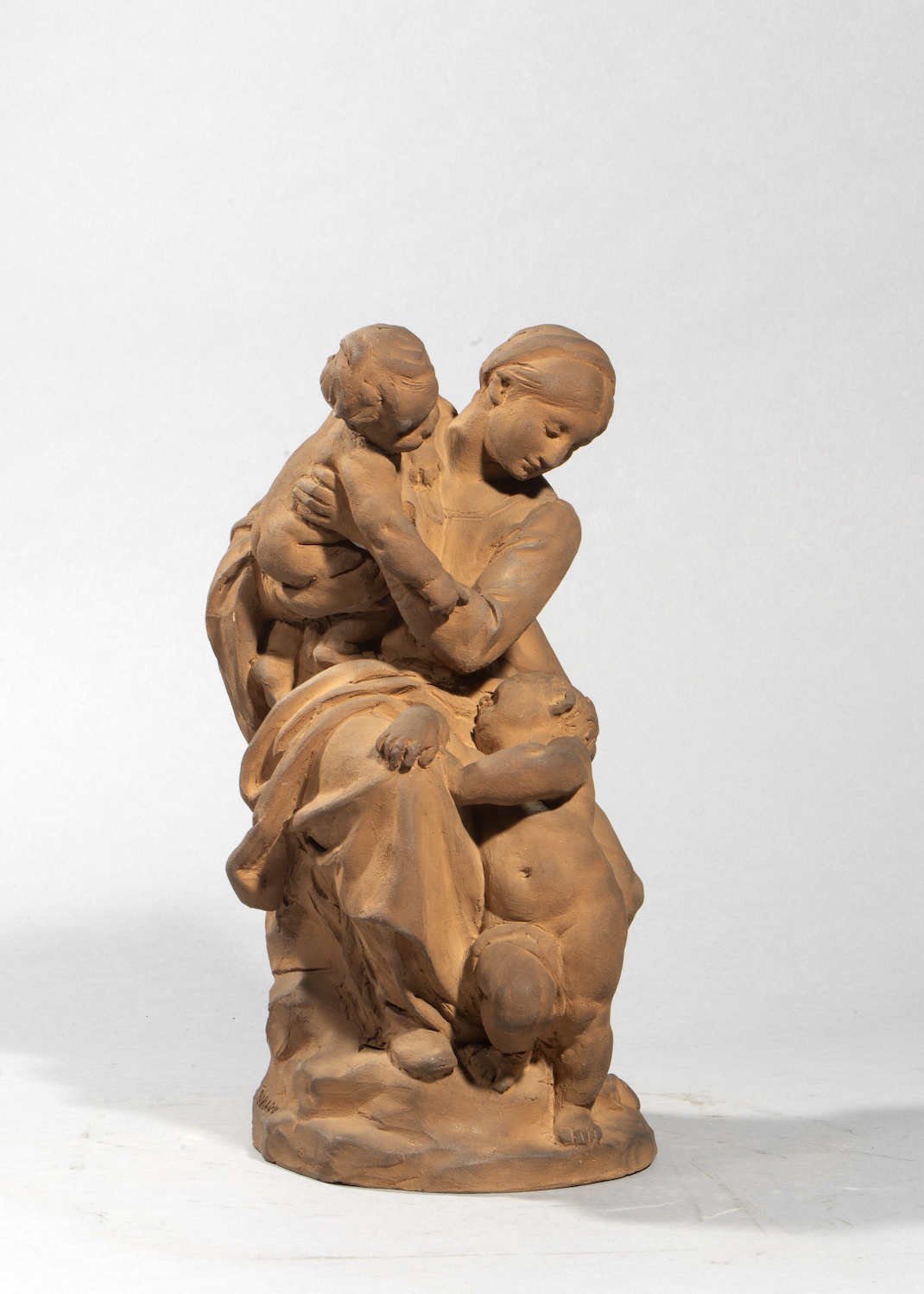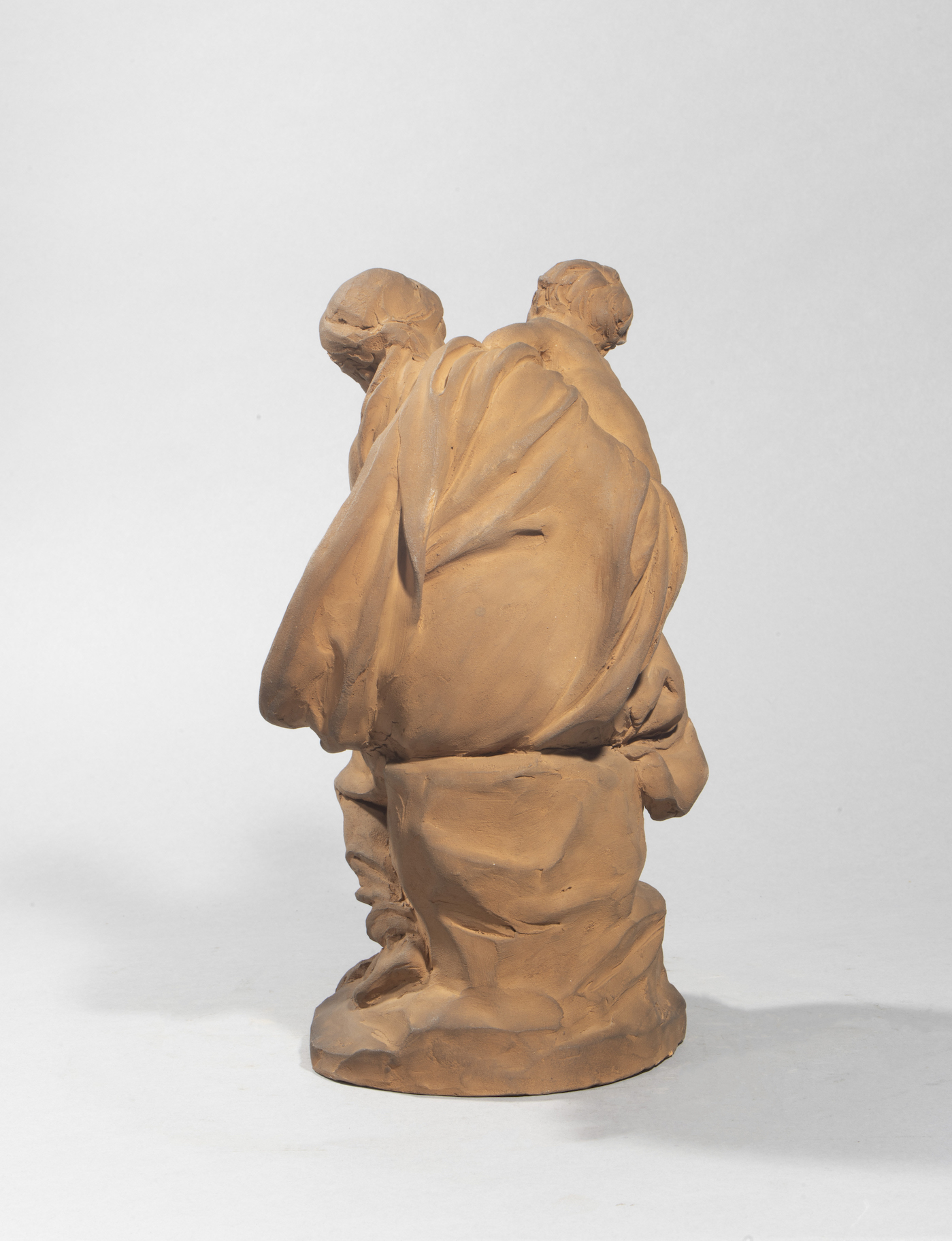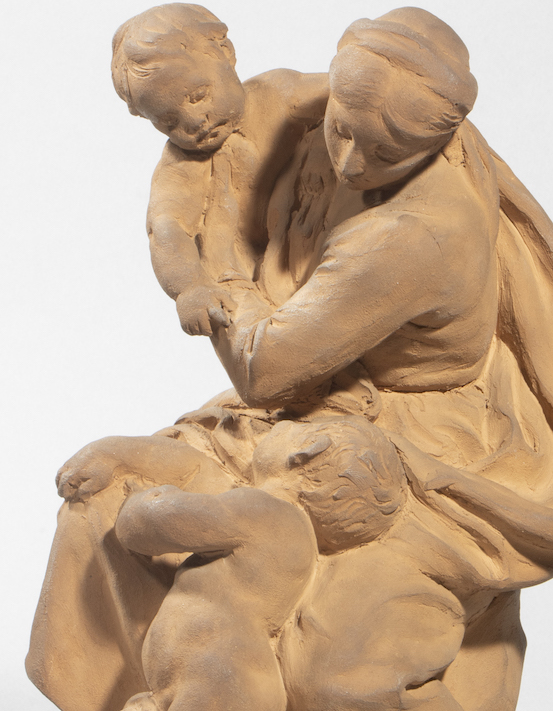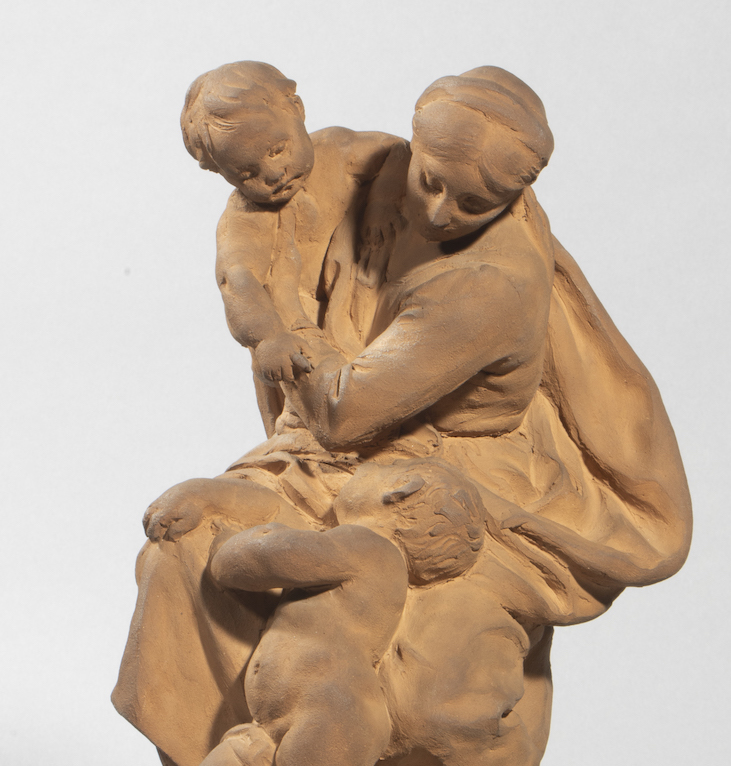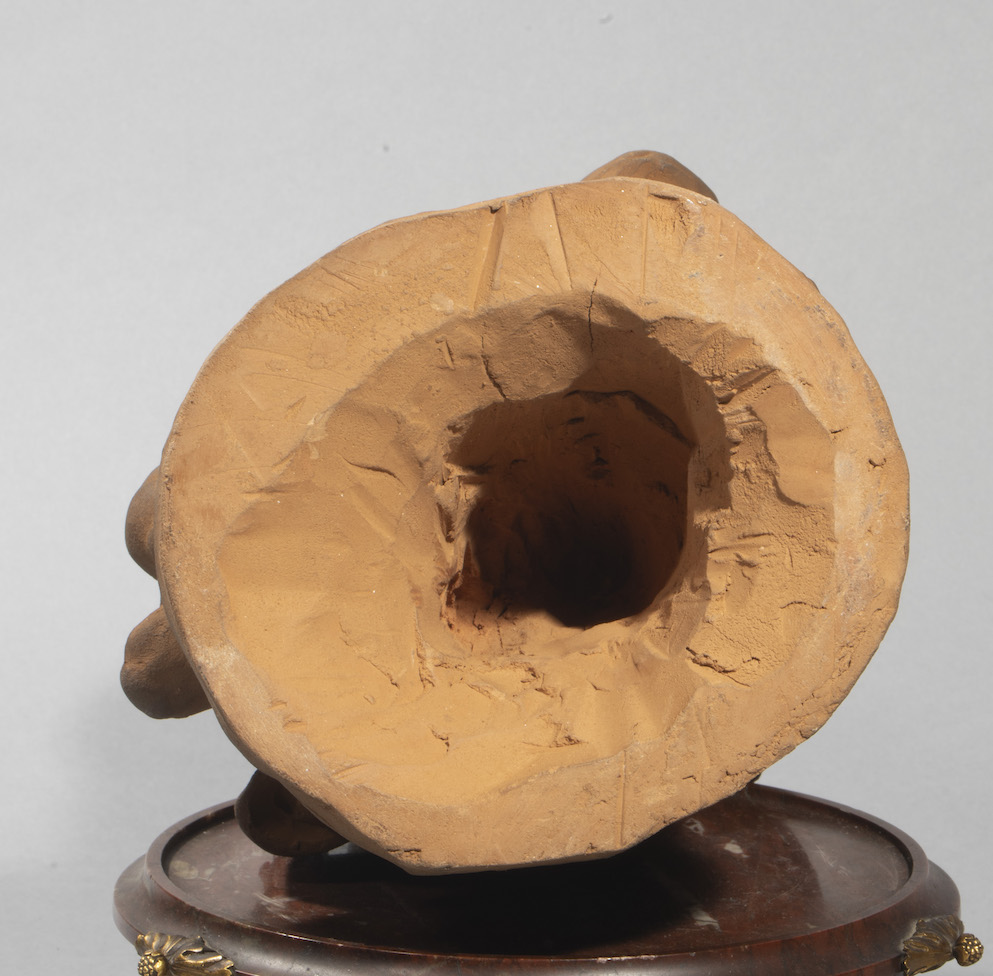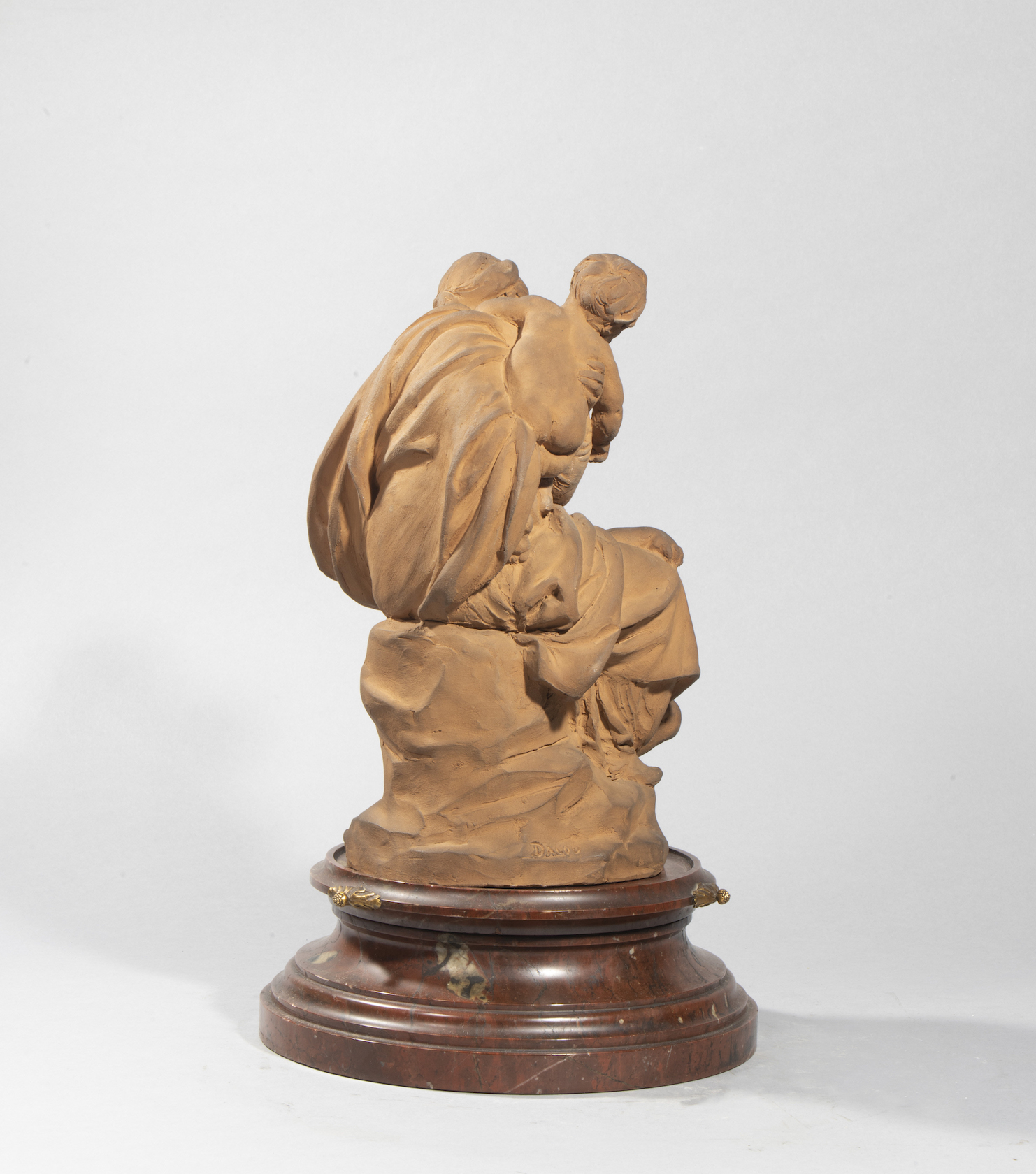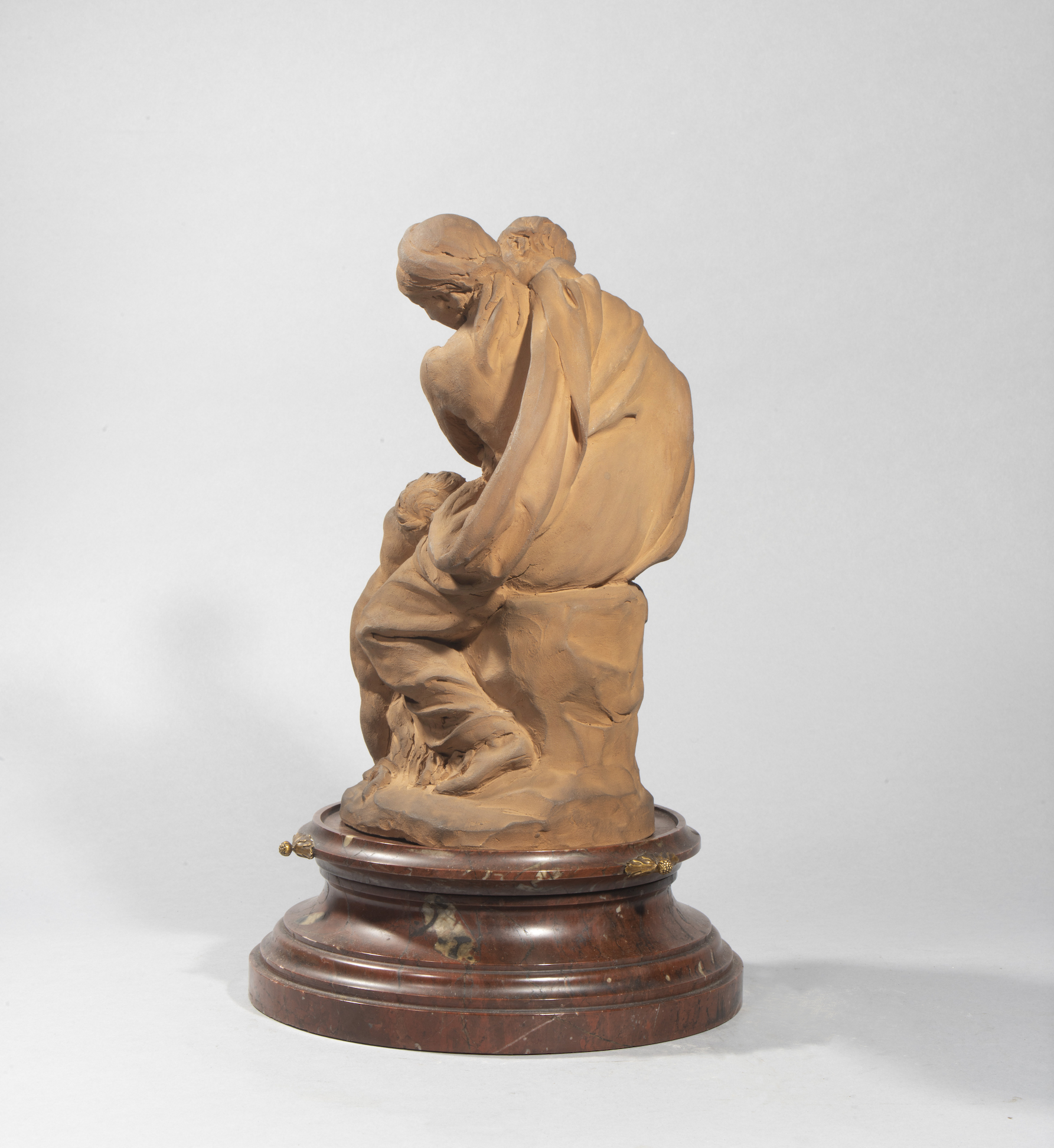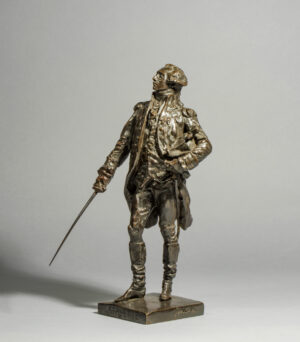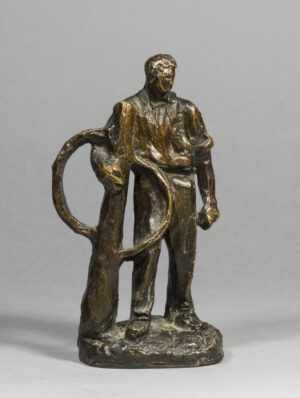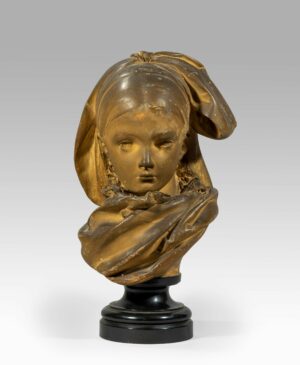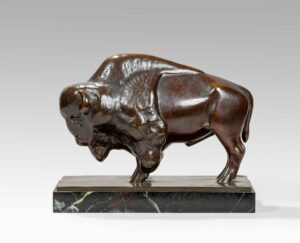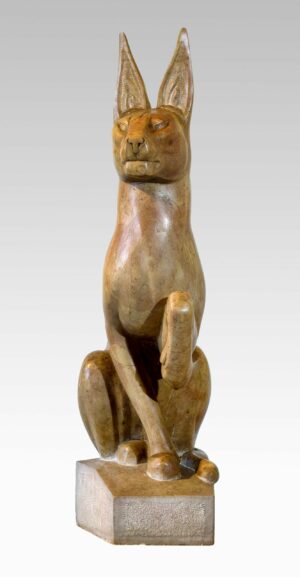Description
Works created during the sculptor’s London period, such as our Seated Madonna with Two Children, contain many autobiographical references. For instance, Dalou’s daughter, Georgette, born with a mental handicap, led him to be a particularly present father. This role inspired him to create moving scenes of maternity, illustrating universal maternal love. This unpublished terracotta can be linked to a group of works which, although missing today, are mentioned by the sculptor’s biographer, Maurice Dreyfous. In 1909, Dreyfous reported that Dalou was “throwing into the bucket” a number of works with which he was dissatisfied. Of these, he describes three in detail: “The second group, completed and destroyed, comprised a seated Madonna, her right leg bent backwards, a child resting his feet on her left thigh, who she supports with her left arm, while he rests his little head on the breast of his divine mother. At her feet stands another child. St. John looks at both the Madonna and the child she is carrying”. The author adds: « As was his custom, Dalou had done the nude of this group completely, and it was, according to the testimony of his friends Alphonse Legros and Lantéri, completely out of line. Then he modeled the draperies, tried to get them right, tried again to get them right, made and undid them twenty times, became tired of them, became annoyed with them, never finding that they matched what he had dreamed of. And on one day of final discouragement, he destroyed the whole thing completely. Of these two groups (the first is a nude bather), no one remembers ever seeing anything again, neither the sketch nor the preparatory model… As for the Madonna, the only trace left is a tiny scrap of a sketch…”. It must be admitted that the description is extremely close – with the exception of the gesture of the Infant Jesus who is pointing at the little Saint John – to our remarkable terracotta, with its highly detailed and accomplished rendering. Although this version, with variants, of Madonna Sitting with Two Children is inspired by 17th-century devotional statuettes in terracotta, it belongs above all to the corpus of works by the artist produced between 1874 and 1877. Like the destroyed Madonna, this terracotta is the source, according to the artist’s biographer, of the famous marble group, Charity, commissioned in 1877 to adorn the Royal Exchange Fountain (now replaced by a bronze copy). Important enough to have been preserved and signed by the sculptor, it anticipates the composition of the fountain, with the same inclined position of the Madonna and the little St. John placed at her feet. Inspiring and inspired, it is at once traditional and modern.

